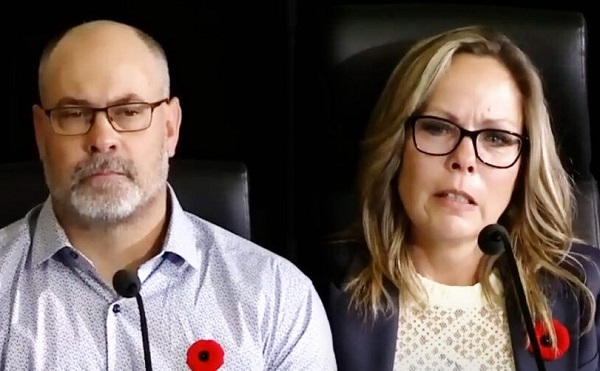Alberta
The world is full of options

The world is full of options.
Keep dreaming or cut your hopes? With opinions dominating every aspect of life, whose judgment can you trust? Should we step outside or wait until the siren stops wailing?
Right now, almost at this moment, the National Hockey League is asking those questions: push aside all obstacles and restart the abbreviated current season, or accept that games without fans won’t provide the answer, and the emotional, fan-driven thrills, that supporters truly want? Those questions are front and centre for commissioner Gary Bettman and his paid advisers, as well as for all of us who count on sports – especially hockey, even in what should be baseball season – to fill essential blanks in our schedules. Another group waits more anxiously than ticket-buyers or big-screen addicts possibly could.
The players, of course.
For many, their future next season – even beyond whatever shape their game takes in the short term – is transcendent. Those who have endured a difficult partial season obviously have more concerns than those whose team standings and personal statistics are beyond rebuke. But that, in every sport, is a minority. Far more common are those who cannot tell what next year will bring.
It’s entirely possible that one such man will be Mark Pysyk, the former Edmonton Oil Kings captain who became a first-round draft choice of the Buffalo Sabres in the 2010 entry draft and later was traded to the Florida Panthers, where his career has been solid but, as he would clearly admit, not spectacular.
Pysyk holds a high place in Oil Kings junior history. Although his profile never reached the level of Hall-of-Famers Johnny Bucyk or Norm Ullman, nor Al Hamilton and coaching great Pat Quinn and Hall-of-Fame builder Glen Sather, he was the first prospect to don an Edmonton uniform when the franchise returned to organized hockey in 2007 after a long period of ugly sports politics kept this community on the outside looking in.
Pysyk played only 14 Western Hockey League games that season but was a junior star from then on. After Buffalo grabbed him, he played part of one season in the American Hockey League. Since then, he has been fully employed, except for three games in Rochester while recovering from an injury in the 2015-16 season, shortly before he became part of a draft day trade that sent him to the Florida Panthers.
In the next two seasons at his sunny South home, Pysyk performed almost exactly as before: go to work, do the job, get ready for practice tomorrow. seven goals and 33 points in 164 regular-season games; impressive enough, he was, to remain protected in the Las Vegas expansion draft. Then, last season, it was down to one goal and 10 points in 70 games. Word leaked that he would be available for the right trade offer.
Some idle time at the start of this season could not have been unexpected. New head coaches – Joel Quenneville, in this case – always bring change. Blueliners Aaron Ekblad and Anton Stralman played longer minutes. Mike Matheson and MacKenzie Weegar contributed to Pysyk’s extra rest. Then came the change that provided a whole new picture – at least potentially.
Pysyk became a right winger. He scored nine goals – easily his best ever – and the Panthers remained, somehow, as playoff possibilities. His defensive abilities helped keep opposition scoring chances down while this third (sometimes fourth) line improved the offence.
That happy collection of events certainly has presented new possibilities. Will he be a Panther next season? Will he be a forward or a defenceman? Is there any chance that the astute Quenneville saw something other analysts missed before Pysyk arrived.
Eventually, this quality young man will use his ability and his character to answer those questions.
Alberta
Tell the Province what you think about 120 km/h speed limit on divided highways

Alberta’s government is engaging with Albertans on increasing speed limits on rural highways.
Starting Nov. 7, Albertans can share their views on modernizing speed limits on divided highways through an online survey running until Dec. 12. The survey will ask how Albertans view raising the speed limit by 10 km/h on various highways from 110 km/h to 120 km/h.
“Alberta’s government is investigating how to safely increase speed limits on divided highways, and if Albertans support increasing speed limits. We are investing more than $1.5 billion this year alone to improve highway safety and upgrade infrastructure across the province. We want Albertans to be able to drive the speed limit that the highways are designed for. Modern vehicles combined with public awareness mean we can explore higher speed limits.”
The survey will provide Albertans with the opportunity to provide input on which highways they would prioritize having a speed limit increase, their views on restricting commercial trucks from using the far-left lane on highways with three or more lanes and any other feedback that would improve driving experiences on provincial highways.
Following a review of the survey results, Alberta’s government plans to conduct a mini-trial of a 120 km/h speed limit to assess the impacts of higher speed limits on divided highways. The trial will include strong monitoring to assess driving behaviour.
Alberta’s government reminds motorists to slow down and drive to the conditions. Speed limits are set for ideal conditions. When roads are wet, icy or when there is reduced visibility, motorists should slow down.
Quick facts
- Alberta’s provincial highway network includes more than 64,000 lane kilometres of highways, about 11,700 lane kilometres of which are divided.
- The posted speed limits of Alberta’s divided highways range from 100 to 110 km/h, although the posted speed limits on segments passing through cities, towns and First Nation lands can be as low as 50 km/h due to factors such as signalized intersections, pedestrians and local access.
Related information
- The survey is available online.
Alberta
Alberta Announces Members of Class Size and Complexity Committee

A new Class Size and Complexity Cabinet Committee has been struck to address classroom challenges.
Taking action on class size and complexity
Classrooms in Alberta continue to grow and are becoming increasingly complex, and immediate action is needed to address these issues in the public education system. To meet these issues head on, the Class Size and Complexity Cabinet Committee has been created. The cabinet committee will help guide government policy and deploy resources to deal with class sizes and classroom complexity.
“We are committed to providing world-class education, and we’re building schools and funding education at a rate unprecedented in this province. This committee will help us address the concerns of teachers, parents and students around class sizes and complexity.”
Throughout November, Alberta’s government will continue work with school boards to collect data on class sizes and classroom composition. The cabinet committee will use this data to direct resources to the classrooms that need it the most. Starting in January, this data will be made available and released annually.
The Class Size and Complexity Cabinet Committee will be co-chaired by the Premier of Alberta and the Minister of Education and Childcare. It will also include non-voting members representing school boards, administrators and a teacher representative of the ATA. The committee will also hear from school boards, academic experts, teachers, educational assistants, complex needs specialists and parents to inform its decisions and guide this vital work.
“We heard teacher concerns, and we are providing solutions. The Class Size and Complexity Cabinet Committee will help us take immediate action and ensure teachers and students are given the support they need to succeed.”
In June 2025, Alberta’s government established the Aggression and Complexity in Schools Action Team to provide advice on addressing classroom complexity. The report has been received and will be released soon. Over the coming months, the cabinet committee will start rolling out solutions informed by the action team’s recommendations. In addition, the committee will guide the creation of a new inclusive education policy framework.
“The work of this committee will support teachers in responding to the growing complexity in our classrooms. We will ensure that the voices of the contributors to the initial work guide
solutions that truly improve the educational experience for students and the educators who serve them.”
“I appreciate the government’s recognition of the impact of classroom complexity and their commitment to working collaboratively for improvement. Supporting teachers ultimately improves classroom conditions and student outcomes.”
Using data collected, this cabinet committee will also guide Alberta’s government in executing its commitment to hire 3,000 new teachers and 1,500 new educational assistants over the next three years. They will also assist in identifying and prioritizing where new schools and modulars should be built, advancing the government’s commitment to invest $8.6 billion to build 130 new schools, and provide 109 modular classrooms in the growing communities that need them urgently.
Quick facts
- Members of the Class Size and Complexity Cabinet Committee include:
- Danielle Smith, Premier of Alberta
- Demetrios Nicolaides, Minister of Education and Childcare
- Jason Nixon, Minister of Assisted Living and Social Services
- Rick Wilson, Minister of Mental Health and Addiction
- Searle Turton, Minister of Child and Family Services
- Lynnette Anderson, chief superintendent, Edmonton Catholic Schools
- Nicole Buchanan, chair, Red Deer Public Schools
- Marilyn Dennis, former president of Alberta School Boards Association
- Mike McMann, superintendent, Fort Vermilion Schools and President, College of Alberta School Superintendents
- Joanne Pitman, chief superintendent, Calgary Board of Education
- Dr. Elissa Corsi, Alberta Teachers’ Association
- Only Cabinet members are voting members. Additional guests will be invited to attend and share their expertise at the discretion of the chairs.
- School boards will be required to submit data on Alberta classrooms by Nov. 24.
-

 espionage2 days ago
espionage2 days agoU.S. Charges Three More Chinese Scholars in Wuhan Bio-Smuggling Case, Citing Pattern of Foreign Exploitation in American Research Labs
-

 Business1 day ago
Business1 day agoCarney budget doubles down on Trudeau-era policies
-

 COVID-191 day ago
COVID-191 day agoCrown still working to put Lich and Barber in jail
-

 Business1 day ago
Business1 day agoCarney’s Deficit Numbers Deserve Scrutiny After Trudeau’s Forecasting Failures
-

 Business1 day ago
Business1 day agoCarney budget continues misguided ‘Build Canada Homes’ approach
-

 International1 day ago
International1 day agoKazakhstan joins Abraham Accords, Trump says more nations lining up for peace
-

 armed forces16 hours ago
armed forces16 hours agoIt’s time for Canada to remember, the heroes of Kapyong
-

 Energy18 hours ago
Energy18 hours agoCanada Cannot Become an Energy Superpower With its Regulatory Impediments







